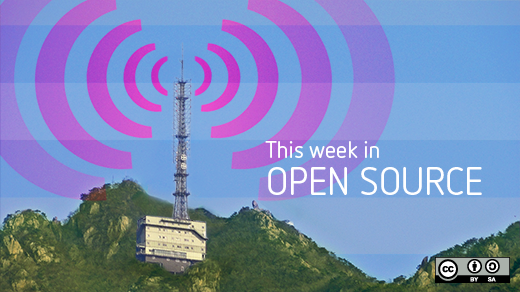In this week's edition of our open source news roundup, we take a look at FCC rules for wireless router firmware, open source wheelchairs and insulin, motivators for open source programmers, and more!
Open source news roundup for November 14 - 21, 2015
These biohackers are creating open source insulin
In an effort to make insulin more affordable, biohackers working with Counter Culture labs are attempting to create open source insulin. Counter Culture labs, a community laboratory in Oakland, California, is trying to create generic insulin using open source protocols.
They hope to provide an insulin that is unencumbered by patents so that it can be reproduced quickly and cheaply. Maureen Muldavin, a program manager at Counter Culture Labs and a biohacker involved in the Open Insulin project says, "It takes legitimate scientific research to create a biosimilar generic [drug], and generic companies don't want to do scientific research." Muldavin says that biosimilar drugs are not easy to create and that insulin is especially difficult because of its chemical structure.
The biohackers have another agenda, that of showing that biohackers can make real scientific contributions. "We want to show that a bunch of people with varying levels of scientific training can come together with a minimal budget and community space and do legitimate scientific research," says Muldavin.
Counter Culture labs was trying to raise $3,000 US in 16 days to meet their crowdfunding goal. They have met that goal and are now setting their sights on $25,000 US.
FCC rules do not ban open source firmware
Hardware hackers using open source router firmware such as DD-WRT, OpenWRT, or Tomato, have been concerned that a new FCC rule would ban the use of such firmware. The concern was that because the open source firmware would allow the hardware to be tweaked in such a way that the wireless radio signals would exceed the prescribed power limits and would interfere with other devices, the FCC would ban it completely with these rules.
The FCC is in the process of revising its proposed rules to clarify them and to ensure that, while the power limits remain in place, and routers that exceed those linits would be considered out of compliance, open source firmware is not summarily banned from these routers.
FCC: No Ban On Open Source Firmware
One interesting side effect of these new rules implied by the article is that wireless router vendors may be required to open their source code.
Bern council demands transition to open source
The Swiss capital of Bern is looking to reduce its dependence on proprietary desktop software. The Bern council has demanded a transition to open source software and has initiated a plan to replace proprietary software with open source alternatives such as Linux and LibreOffice. The council rejected the city's request for a six year renewal of proprietary licenses and will only allow proprietary software to be used until 2018.
"Basically, from now on, the IT department may only procure and implement solutions that are platform-independent," the councillors agreed on Thursday.
Researchers study motivations of open source programmers
Many people do not understand why open source programmers "work for free" to create the many creative and powerful programs that populate the open source ecosystem. Well, not all open source programmers work for free, but many do. And the question remains, "why?"
A group of researchers wanted to answer this question. Because there were no known studies that investigated the open source hacker phenomenon, they created their own study. The results showed that hybrid motivations, that is, both intrinsic and extrisic, motivated open source project contributors. They also found that, of the various motivators, compensation was of lower importance than others such as social recognition and self esteem.
Meet HU-GO: the open source wheelchair with 3D printed parts
It is expensive to be disabled in a world designed for those who are fully enabled. Wheelchairs, for one example, can be extremely expensive and electric ones can cost thousands of dollars. This can be a problem even for many in affluent countries, but can be an insurmountable barrier for poor people in developing countries.
Architect Hugo Riveros has designed a low-cost, easy-to-assemble wheelchair that he calls HU-GO. Although many parts of a wheelchair cannot be manufactured using 3D printing, there are also many that can. By printing as many of the parts as possible, many of the rest can be obtained locally. Things like wooden rods or broom handles to support the seat and local fabrics for the seat itself, when combined with the inexpensively printed connecters and other parts, can make ownership of a wheelchair possible for many that would otherwise not have access to such an essential enabling tool.
All of Riveros' files and instructions are open source so that anyone can download them and create a wheelchair.
In other news
- 5 game-changing open source projects
- Red Hat delivers more container love in its latest Linux update
- Spanish startup deploys Ubuntu Snappy Core open source OS for drones
- Today's open source movement takes its cue from Ben Franklin
- Visual Studio now supports debugging Linux apps, code editor now open source
- Open source router is instant crowdfunding success
- Open source a hit with Bengaluru's techies
Thanks, as always, to Opensource.com staff members and moderators for their help this week. Make sure to check out our event calendar, to see what's happening next week in open source.







1 Comment